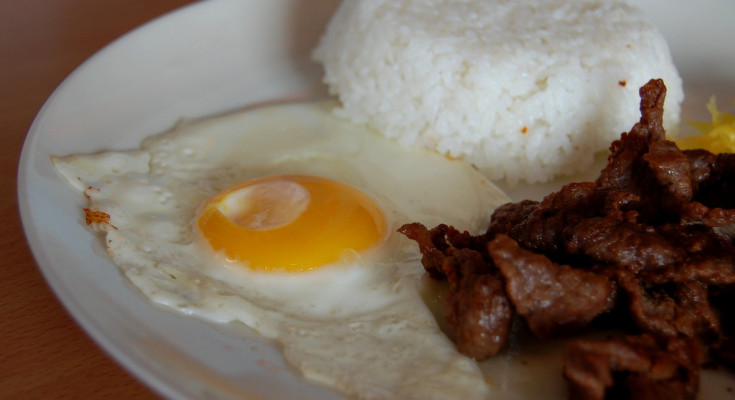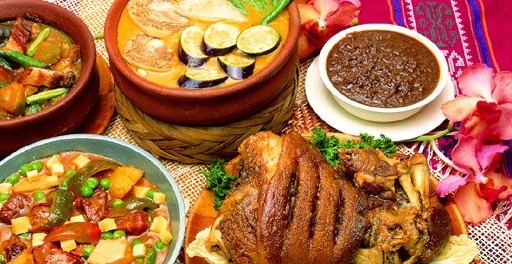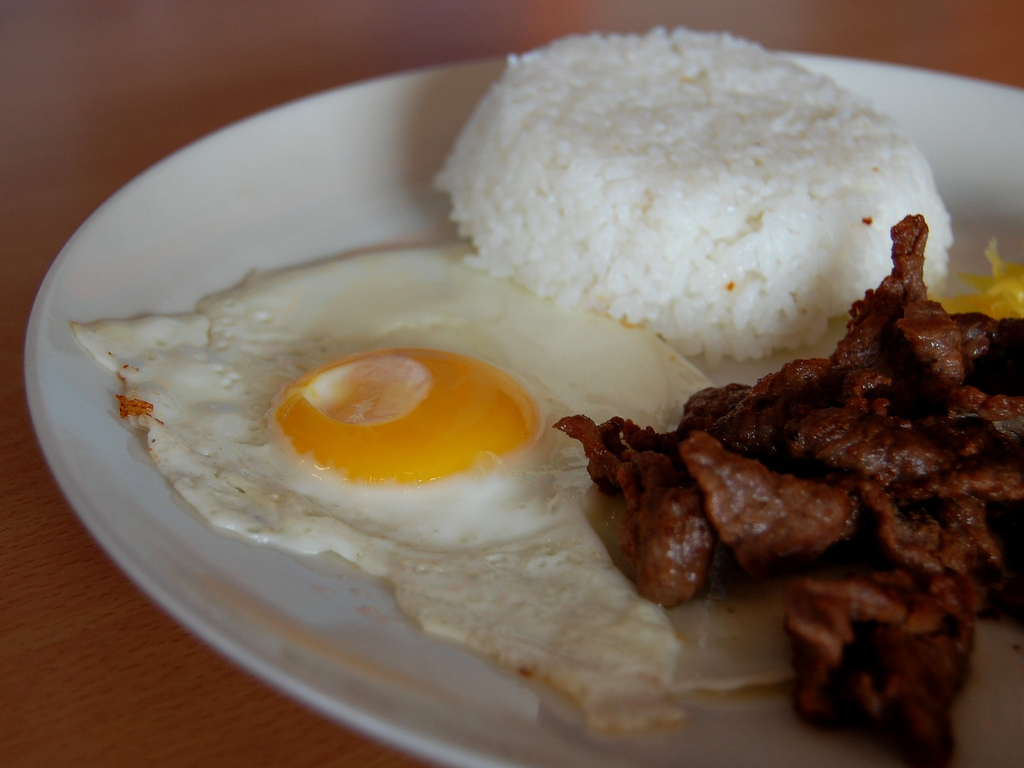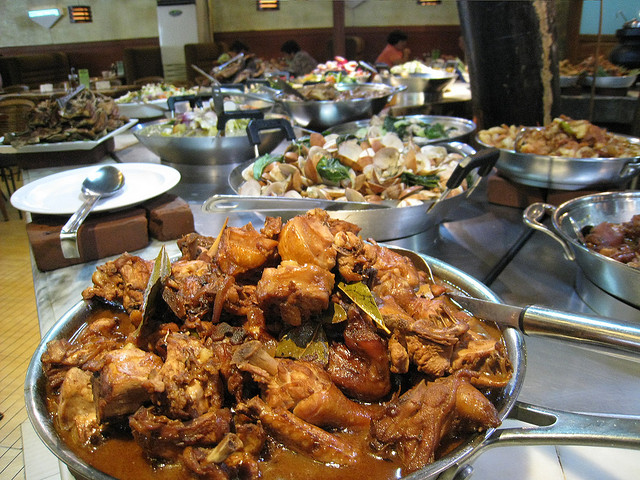By: Joan Mae Soco-Bantayan
Filipinos are food lovers! They take regular meals thrice a day; one in the morning (around 8:00 am), another at noon (12:00 nn), and one more for dinner. Aside from that, they have in-between meals and snacks which they call merienda. The country’s staple food is rice, so expect having rice every meal if you plan to dine in local style.
So, if you’re on the road to Philippines, be sure to open up your palette and get ready for a gastronomic romance with the country.
- Garlic rice matched with beef tapa and egg sunny side up is known as TAPSILOG – The name is a contraption of these three recipes, Garlic rice (Sinangag), Beef Tapa (Tapa), and Egg (Itlog). Filipinos call cured beef (muton or venison) Tapa. They slice it into thin pieces and preserve it with salt and other spices. For many, this type of meal is served on the table as a sign of abundance. If you don’t mind adding up carbs, then this is one meal you should try. This meal is best when coupled with native brewed coffee.
- Dried Fish with rice – There are a good variety of fried rice in the Philippines, all referred to as Sinangag. But in the Philippines, there is nothing more delectable than combining dried fish with tomato and cured vinegar. There are many rice dishes with meat and sausages, but for the common masses fried “tinapa” (smoked fish) or “tuyo” and “daing” (dried fish) is the usual viand. Often, these are also the most tasty!
- Puto Maya (Sticky Rice) with Tableya Drink (Native Cacao Drink) – This delightful combo is probably the best pair up that you can have after a night of booze and laughter. It is cooked in a claypot steamer with coconut milk and ginger. The result is a wonderfully soothing sweet rice mixture wrapped up in banana leaves.
- Adobo – If you enjoy pork, then adobo is the dish to satisfy your cravings and increase your appetite. Adobo is pork cooked in soy sauce and native vinegar, seasoned with spices and herbs.Adobo also comes in a chicken version and sometimes with vegetables or seafood. Adobo has been called the quintessential Philippine stew, served with rice both at daily meals and at feasts. It is commonly packed for Filipino travelers because it keeps well without refrigeration. Its relatively long shelf-life is due to one of its primary ingredients, vinegar, which inhibits the growth of bacteria.
- Street food – the Philippines has caught up with the street food craze all over Asia. Filipinos are particular when it comes to food handling and you can trust that the dishes are tasty and not like anything you’ve ever had in your area!
One of the most infamous dishes commonly sold as streetfood is balut, fertilized duck embryo that is boiled and eaten in the shell. It is commonly sold as streetfood in the Philippines. The ideal balut is 17 days old, at which point it is said to be balut sa puti (“wrapped in white”). The chick inside is not old enough to show its beak, feathers or claws, and the bones are undeveloped.
Balut are thought to be highly nutritious and aphrodisiac. Most visitors will probably find this very hard to swallow…Don’t worry though, the Philippines have a lot to offer foodwise, so it’s easy to steer clear from the occasional dish that seems a bit too exotic.















